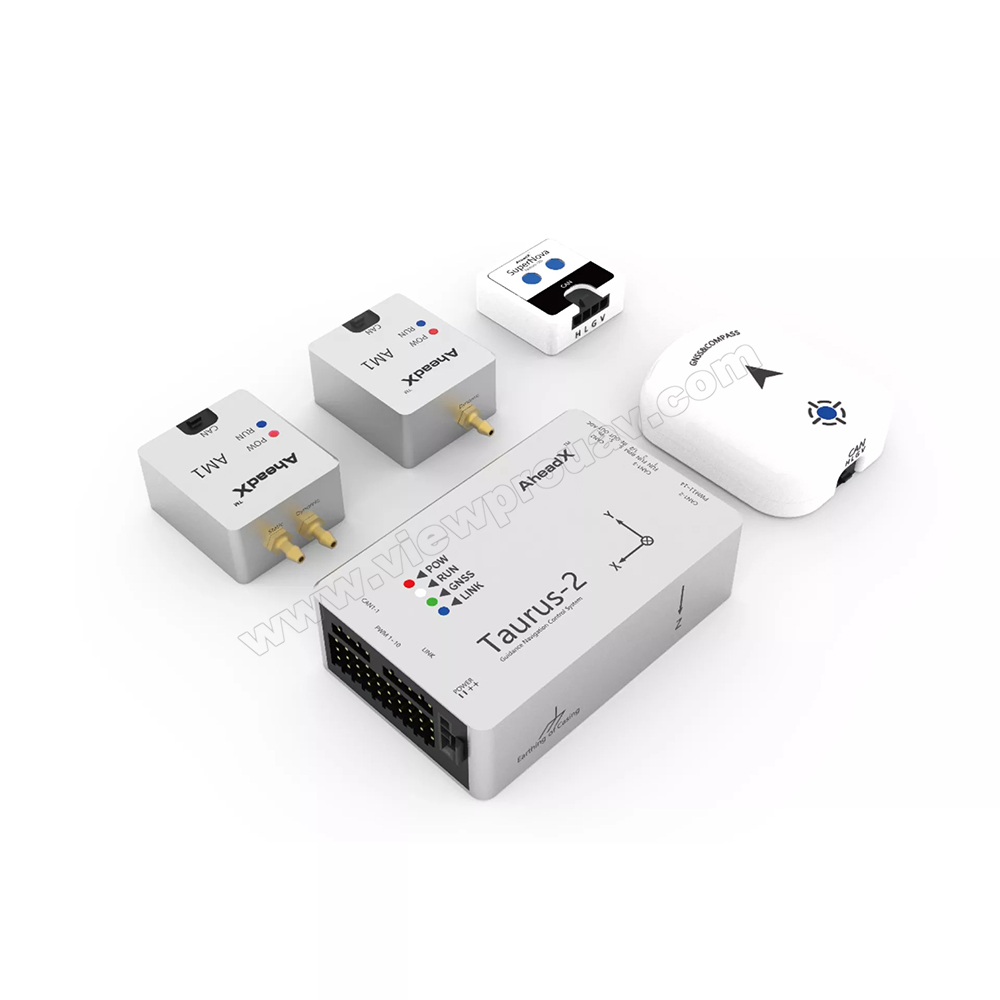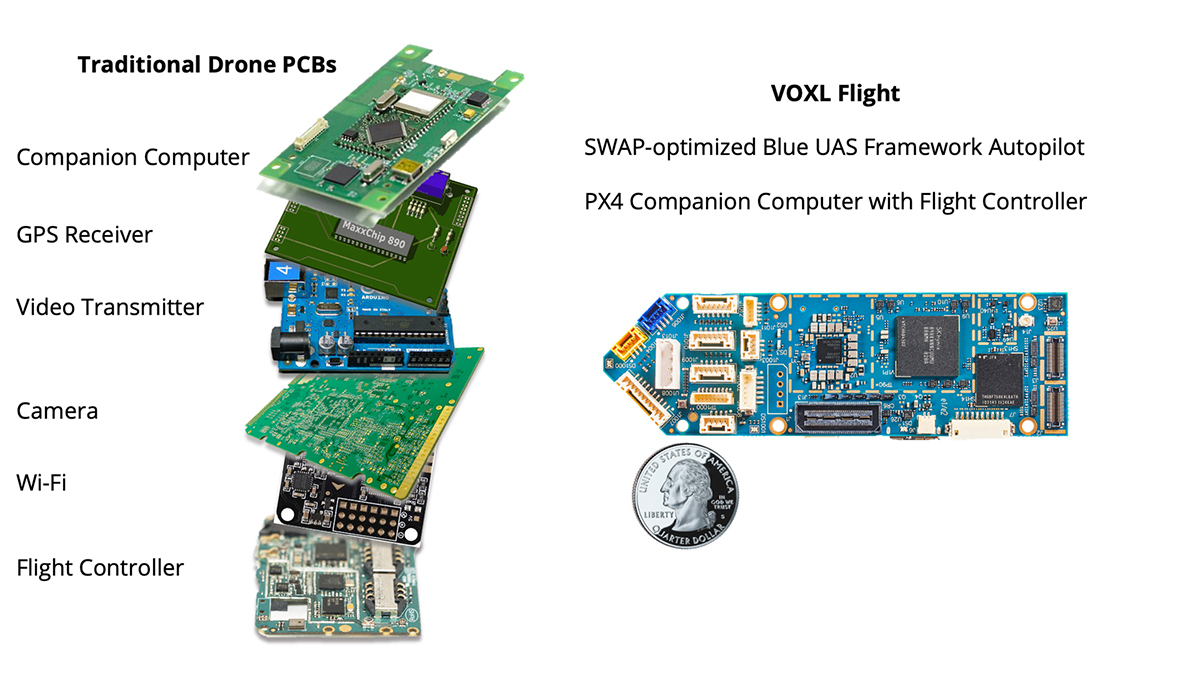SparkNavi Drone Flight Controller and GNSS/INS Made in Taiwan: Technology for Professional UAVs
SparkNavi Drone Flight Controller and GNSS/INS Made in Taiwan: Technology for Professional UAVs
Blog Article
The Significance of Drone Trip Controllers in Modern Aerial Technology: Trick Parts and Their Influence
In the realm of modern-day airborne technology, drone trip controllers serve as the essential systems that orchestrate a drone's efficiency and capacities. As markets increasingly count on drones for applications varying from agriculture to security, the advancing modern technology within flight controllers raises crucial questions regarding their future impact and prospective innovations.

Review of Drone Trip Controllers
In the realm of aerial innovation, drone flight controllers function as the vital mind of unmanned airborne lorries (UAVs), enabling accurate ability to move and stability during flight. These innovative systems integrate sensor data, processing formulas, and control inputs, enabling drones to execute complicated flight patterns with accuracy.
Drone flight controllers use various sensing units, such as gyroscopes, accelerometers, and GPS components, to assess the UAV's orientation and position in real-time. This info is vital for preserving balance and ensuring risk-free operation in varied ecological problems. The controllers procedure this information to make rapid adjustments to the drone's motors, enabling smooth changes and receptive handling.
In addition, flight controllers are outfitted with innovative software program that supports features such as waypoint navigation, barrier avoidance, and self-governing flight abilities. This software is essential for both business and leisure applications, where dependability and precision are critical. As drone modern technology remains to breakthrough, the evolution of flight controllers will play a crucial role in improving UAV adaptability, functionality, and safety and security, inevitably broadening their applications across various markets.
Secret Components Explained
Recognizing the fundamental parts of drone flight controllers is essential for understanding how these systems operate efficiently. At the heart of a flight controller is the microcontroller, which acts as the mind, processing data from numerous sensing units and performing commands. Important sensing units include accelerometers and gyroscopes, which gauge the drone's orientation and movement, supplying important comments for stabilization.
An additional key component is the barometer, which determines elevation by measuring air pressure, while GPS modules supply positional information, allowing independent navigating - SparkNavi drone flight controller and GNSS/INS made in taiwan. The trip controller additionally interfaces with Electronic Rate Controllers (ESCs), which regulate the speed of the drone's electric motors based on the controller's commands
Communication components, such as radio receivers, assist in remote input, allowing drivers to send commands in real-time. Furthermore, some flight controllers incorporate software that can deal with complex algorithms for waypoint navigating, flight preparation, and telemetry data analysis.
Duty in Flight Stability
Central to preserving trip stability, drone trip controllers use advanced formulas to refine sensing unit data and make real-time changes. These controllers are geared up with a range of sensing units, including accelerometers, measures, and gyroscopes, which continually monitor the drone's rate, elevation, and alignment. By interpreting this information, the flight controller can identify deviations from the desired flight course and respond immediately to maintain security.
For instance, if a drone experiences my link an unanticipated gust of wind, the trip controller can swiftly adjust the motor speeds to counteract the disruption, guaranteeing a constant trip trajectory. This ability is crucial not just for manual trip procedures yet likewise for carrying out complex maneuvers and maintaining smooth trip in numerous ecological problems.
.png)
Furthermore, the innovative formulas used in flight controllers, such as PID (Proportional-Integral-Derivative) control, enable for fine-tuning of the drone's action to adjustments in trip problems. By enhancing these control criteria, flight controllers can enhance security, boost responsiveness, and minimize pilot work. Ultimately, the duty of trip controllers in guaranteeing trip security is essential for the secure and effective procedure of modern drones across varied applications.
Effect On Autonomous Workflow

Independent procedures are especially critical in varied applications such as farming, security, and delivery services. With boosted trip controllers, drones can autonomously navigate established courses, effectively gather information, and adapt to dynamic environments. This capability reduces the need for description constant human oversight, consequently enhancing operational efficiency and safety and security.
In addition, the implementation of artificial intelligence methods within trip controllers enables drones to improve their performance over time by learning from previous goals. This versatility leads the way for more innovative autonomous applications, such as swarm technology, where multiple drones coordinate their actions to accomplish an usual objective.
Future Trends in Trip Controllers
Technologies in flight controller innovation are positioned to change drone abilities in the coming years. One considerable trend is the integration of expert system (AI) and maker learning algorithms, making it possible for drones to find out from their settings and make real-time decisions. This innovation will certainly improve self-governing navigation, barrier evasion, and goal planning, considerably improving operational efficiency and security.
In addition, the development of sophisticated sensor innovations, such as LiDAR and multispectral imaging, will certainly provide flight controllers with richer information inputs. This will imp source certainly promote more innovative analytical capabilities, permitting drones to carry out intricate tasks, such as precision farming, rescue and search, and framework assessments with extraordinary precision.
Another arising fad is the miniaturization of flight controller elements, which will certainly bring about lighter and a lot more compact drones. This evolution will extend flight durations and payload capacities, making drones much more flexible for different applications.
Final Thought
In final thought, drone flight controllers function as vital parts in modern airborne modern technology, making sure stability and accuracy in maneuverability with the integration of microcontrollers, accelerometers, and GPS modules. SparkNavi drone flight controller and GNSS/INS made in taiwan. Their capacity to allow independent procedures and adapt to different applications highlights their importance across multiple industries. As innovations in fabricated intelligence and sensing unit innovation proceed to arise, the capacity for enhanced capacities and improved functional efficiency in drone systems will likely reshape the future of airborne applications
Central to keeping flight security, drone trip controllers utilize innovative formulas to process sensing unit data and make real-time adjustments. By interpreting this data, the flight controller can determine deviations from the desired trip course and react quickly to keep security.
Moreover, the advanced formulas utilized in flight controllers, such as PID (Proportional-Integral-Derivative) control, allow for fine-tuning of the drone's action to changes in flight conditions. Ultimately, the role of trip controllers in making sure trip stability is vital for the secure and efficient procedure of modern drones across diverse applications.
The developments in drone trip controllers not just boost flight security however likewise substantially influence self-governing operations. SparkNavi drone flight controller and GNSS/INS made in taiwan.
Report this page